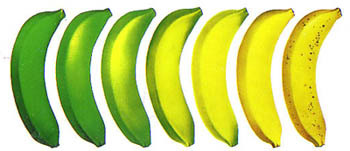Ethylene gas has a structural formula of C2H4, categorizing it as an alkene. This colorless and odorless gas is found in nature and is also man-made. Naturally, it is produced by all plants but mainly agricultural companies use this hydrocarbon to catalyze the vegetable and fruit ripening processes. Fruits, vegetables, and flowers contain receptors which serve as bonding sites to absorb free atmospheric ethylene molecules. Adding ethylene gas to a closed-container of any kind, along with a fruit or vegetable, will hasten ripening, aging, and eventually cause spoilage. Ethylene has been known to be harmful to vegetation—decreasing product quality and shelf-life. Albeit helpful, ethylene is flammable and in certain conditions know to be explosive. Along with its other stigmas this gas has also been know to have a slightly carcinogenic effect when synthesized with oxygen. To plants, its worst effect is depleting post-harvest life by approximately 46%. This then causes companies to spend more money on growing and shipping food, which can hurt the agricultural economy. Man-made ethylene gas has many effects good and bad, but ultimately shares the same qualities as natural ethylene. A good way to induce the ripening process is to place the fruit or vegetable with a banana. The banana produces the greatest amount of ethylene among all of the fruit and vegetables, and hastens ripening in an eco-friendly, productive, and sustainable manner.

No comments:
Post a Comment